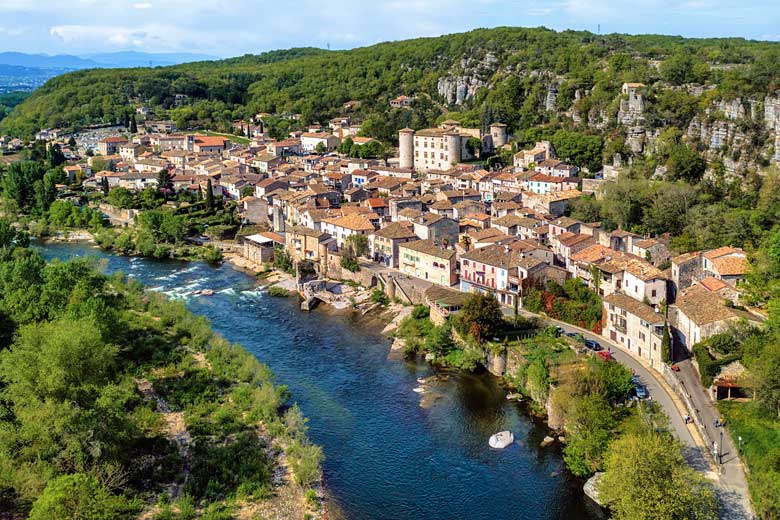7 ways to see ancient Athens, Greece
When you think of Athens*, you probably picture tall Corinthian columns, exquisite temples and detailed statues. And you'd be completely right. There's nowhere quite as stunning in its simple splendour as Athens.
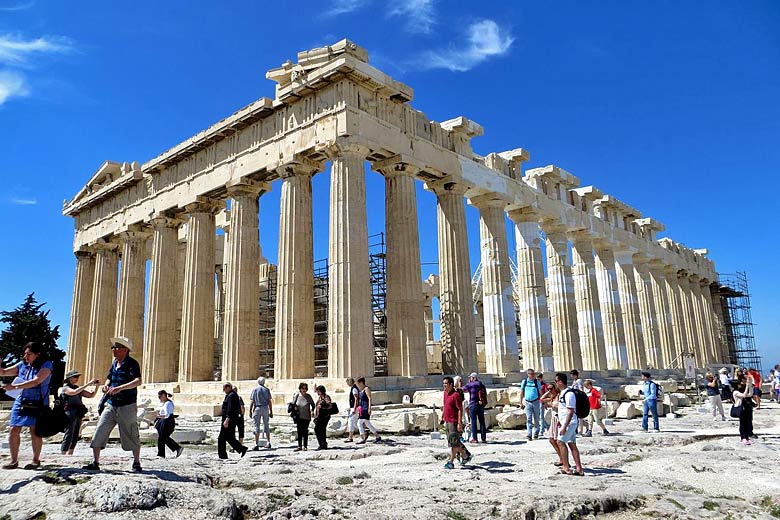
Of course, there are still the trendy rooftop bars, traditional flea markets and expressive public art to explore, but dig a little deeper and you'll feel as if you've time-travelled back to BCE. From museum highlights to remaining sites, here are the best ways to experience all things ancient Athens.
Getting to Athens: check out the latest deals on holidays from lastminute.com*.
1. Get your bearings on a walking tour
Kick-start your trip to Athens with a walking tour. Whether you're travelling as part of a group, as a couple or by yourself, your guide will introduce you to the layers of this ancient city. While you get your bearings, scope out an idea of which sights you want to return to.
Athens Free Tour is one of the best free walking tours. Running twice daily, guides cover the likes of the Changing of the Guards, the National Gardens, the Panathinaikos Stadium and, of course, a roster of centuries-old landmarks. You'll also weave through districts like Plaka, the oldest in the city, and enigmatic Monastiraki.
2. Climb the Acropolis
Approach the 156m-high outcrop that is the Acropolis either from the northern slope through the picturesque village of Anafiotika, or from the southern slope, which passes the impressive Odeon of Herodes Atticus.
No matter what time of year you visit, get there first thing in the morning as nothing keeps the crowds away - and for good reason. The Acropolis is home to a number of sacred ancient monuments but the jewel in the diadem is undoubtedly the Parthenon (447-432 BCE).
This dominating temple is dedicated to the goddess Athena who the city is named after; as you wrap your way around its mighty structure, bask in its silent power.
Move onto the Erechtheion (421-406 BCE) with its famed row of caryatids, the small Temple of Athena Nike (427-424 BCE) and the smattering of other temples and crumbling remains before looking out at the surrounding views of the city and sea.
3. Visit the Acropolis Museum
While many cram in the Acropolis and neighbouring Acropolis Museum into one day, spread your visit over two separate days in order to give them both justice.
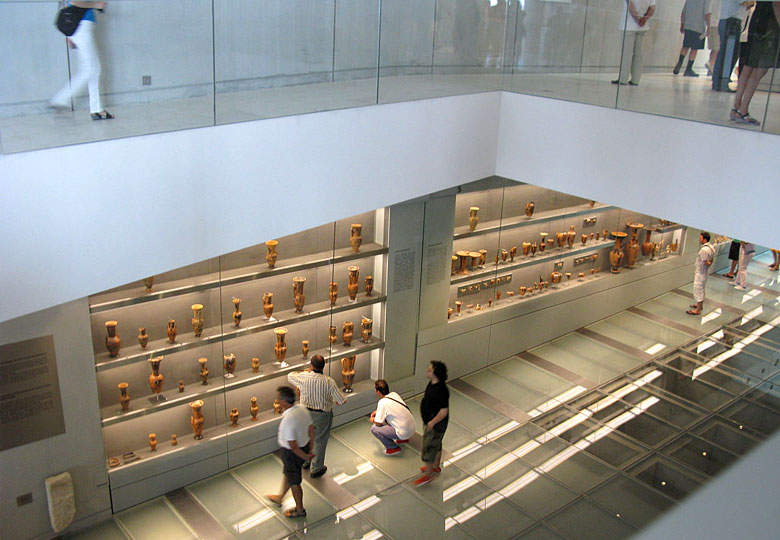
Spanning four floors, the Acropolis Museum tells the story of the sacred rock with no fewer than 3,000 artefacts on display.
Spend a couple of hours surrounded by marble portraits, imposing statues and amphora fragments, and, of course, the colossal figures of the Olympic gods who once adorned the Parthenon's frieze.
If you're in Athens on a Friday night, visit the second-floor restaurant and veranda when it stays open until midnight. Soak up the views of the lit-up Acropolis above, which looks truly transcendent against the night sky.
4. Wander around the Agora
The green space that makes up the Agora is a welcomed break from the heaving crowds just outside the entrance gates.
The word agora literally means 'marketplace' in ancient Greek and was the heart of public life: this was where politics, philosophy and business was discussed alongside the market stalls, marble workshops and religious shrines.
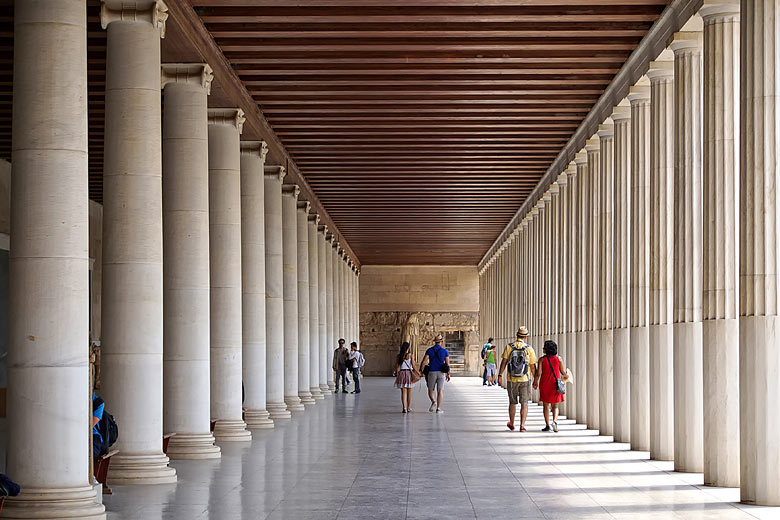
Upon entering, on the left is the Stoa of Attalos, a covered walkway now home to a museum focused on finds related to Athenian democracy, while up on the right is the pristinely preserved Temple of Hephaestus, dedicated to the god of metalworking.
The rest of the grassy site is lined with remnants of the agora's 500-300 BCE layout including the state prison, civic offices and the water clock used to time speeches. And keep an eye out for a wandering turtle (we're not sure why either).
5. Spend a morning at the National Archaeological Museum
It's well worth spending a full morning or afternoon at the National Archaeological Museum, the largest archaeological museum in the country.
With over 11,000 artefacts spread over just two floors, this Athenian staple is home to some of the most revered finds from antiquity, such as the gold funerary mask of Agamemnon and the bronze Jockey of Artemision.
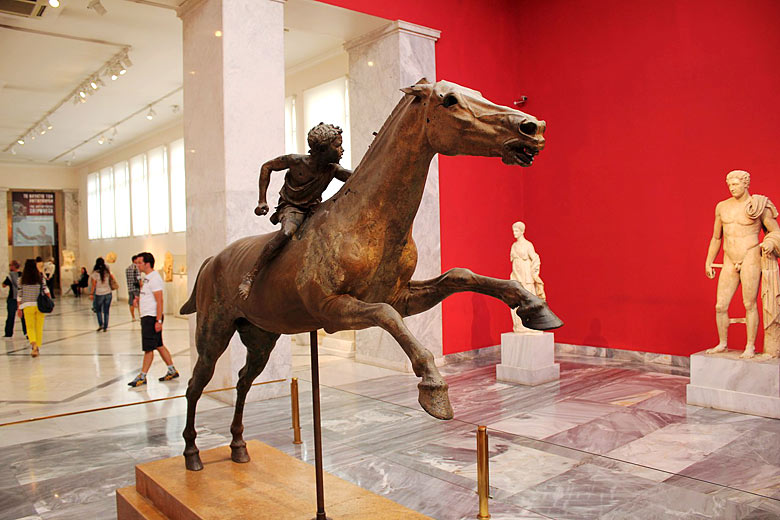
In need of a respite? Head down to the café on the basement floor, which spills out onto a pretty courtyard.
6. Take in the Theatre of Dionysus
Dionysus, the god of wine and entertainment, had many festivals held in his honour at theatres. One of his symbols was a goat and this is how we can thank Dionysus for tragedies; the word literally means 'goat song'.
The Theatre of Dionysus is considered to be the world's first theatre and the birthplace of Greek drama.
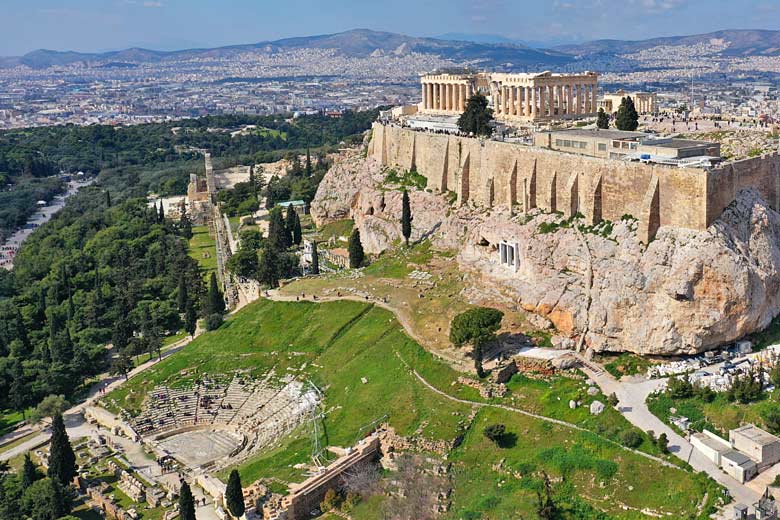
This was where the likes of the great tragic poets Aeschylus, Euripides and Sophocles had their plays performed.
It's a good stopping point as you wind your way up to the Acropolis, as it's built into the southern slopes, but you do have to use your imagination slightly to picture what it would have looked like in its prime.
Yet with its familiar semi-circular shape, front-row VIP seats and reliefs of Dionysiac scenes, this is certainly a theatre still worth celebrating today.
7. Be surprised at the Museum of Ancient Greek Technology
We can thank the ancient Greeks for many things: philosophy, politics, art, architecture - and more scientific technology than we might first think. The Museum of Ancient Greek Technology provides an eye-opening insight into the ancient's sophisticated understanding of engineering that contributed to the complex technology we use today.
Located in the upscale Kolonaki district, the small museum's two floors includes detailed information and staff-guided tours (you're in for a treat if Dimitris is your guide).
Exhibits include alarm clocks, fire-pump extinguishers and astronomical measuring equipment. There are plenty of opportunities to interact with the exhibits, such as the wine-pouring robot that was used in 3 BCE - yes, really!
Weather in Athens
| Jan | Feb | Mar | Apr | May | Jun | Jul | Aug | Sep | Oct | Nov | Dec | |
|---|---|---|---|---|---|---|---|---|---|---|---|---|
| Maximum daytime temperature °C |  12 12 |
 13 13 |
 15 15 |
 19 19 |
 24 24 |
 29 29 |
 32 32 |
 31 31 |
 28 28 |
 22 22 |
 18 18 |
 14 14 |
| Hours of sunshine (daily) | ||||||||||||
| Days with some rainfall |  8 8 |
 9 9 |
 8 8 |
 7 7 |
 5 5 |
 2 2 |
 1 1 |
 2 2 |
 2 2 |
 6 6 |
 9 9 |
 10 10 |
| Sea temperature °C |  15 15 |
 14 14 |
 14 14 |
 15 15 |
 18 18 |
 22 22 |
 25 25 |
 26 26 |
 25 25 |
 22 22 |
 20 20 |
 17 17 |
Ready to discover Athens? Check out the latest offers on holidays with lastminute.com.
More about Greece
- Overview
- Best time to visit
- Weather by month
- 5-day weather forecast
- Destinations
- Travel advice
- Deals & discounts
Greece by month
Jan Feb Mar Apr May Jun Jul Aug Sep Oct Nov Dec
Explore holidays in the sun for less
- Beach holidays
- Family holidays
- City breaks
- Summer holidays
- Winter sun holidays
- Holiday offers
- Top travel brands
- Airlines & flights
- Discount hotels
- Airport parking deals
- TUI
- Jet2holidays
- easyJet holidays
- Love Holidays
- January sales
Airport parking
- Manchester Airport
- Stansted Airport
- Bristol Airport
- Luton Airport
- Birmingham Airport
- Edinburgh Airport
- Gatwick Airport
- Glasgow Airport
- Newcastle Airport
Airport lounges
- Manchester Airport
- Birmingham Airport
- Bristol Airport
- Edinburgh Airport
- Glasgow Airport
- Heathrow Airport
- Newcastle Airport
- Stansted Airport
- Gatwick Airport
Be inspired
Get your weekly fix of holiday inspiration from some of the world's best travel writers plus save on your next trip with the latest exclusive offers
We promise not to share your details





















